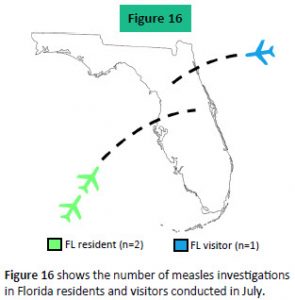Dear Pinellas Pediatrics Patients,
I wanted to write to let you know that your safety is very important to us. We also want to provide you excellent care and reassurance during this rapidly changing Corona Virus Pandemic – COVID 2019.
We are screening our patients who call with complaints of fever and cough for possibility of exposure to the COVID virus. As we do not have the ability to test for the COVID virus, we will refer anyone with risk factors for exposure to All Children’s ER or St. Joseph’s ER. At this time, patients with risk for COVID will not be coming to our office as we are not able to test here.
We have the ability to have concerned patients wait in the car until their appointment time to be called into the office. We also have a separate entrance and separate exam room from the rest of our office to evaluate sick patients if needed.
We want to reassure you that we always wash our hands in the exam room right before we examine our patients. Washing hands is one of the most important measures to decrease spread of illnesses. We encourage you to wash your hands before leaving our office and whenever you return home from any location. Clean the surfaces at home that are frequently touched such as doorknobs, water faucet and toilet handles, and light switches. Try not to touch your face and especially your eyes. Try to eat with a fork or spoon and not your fingers and don’t lick your fingers or put them in your mouth. Give others their personal space and don’t shake hands. Wearing glasses decreases risk of exposure to germs in the air.
We wipe down the toys and surfaces in the waiting and exam rooms with disinfectant at the end of each day. We also clean the surfaces of the exam room at the end of each day using disinfectant.
What can you do to help?
- Let us know if you have any risk factors for exposure to the COVID virus so that we can work with you to get evaluated and treated appropriately in the appropriate setting.
- Arrive in the office wearing a mask if you have a cough and fever. (Masks are in short supply but we are working on getting more as soon as they are available.)
- Bring your own supply of toys and books (and let your child know the limits you have set) if you don’t want your child playing with the toys and books we have here.
- Have your child and you wash your hands before leaving the office.
- Follow the recommendations from the CDC and the Florida Department of Health
There is an update at noon each day at CDC.org/coronavirus that you can check for facts vs “fake news”.
The website for the Florida Department of Health for our local information is FloridaHealth.gov/diseases-and-conditions/COVID-10
We are here for you and your child. Pinellas Pediatrics is your medical home.
Dr. Kathy McNeely

